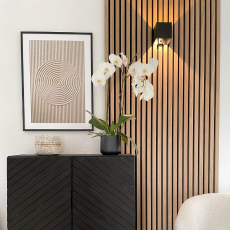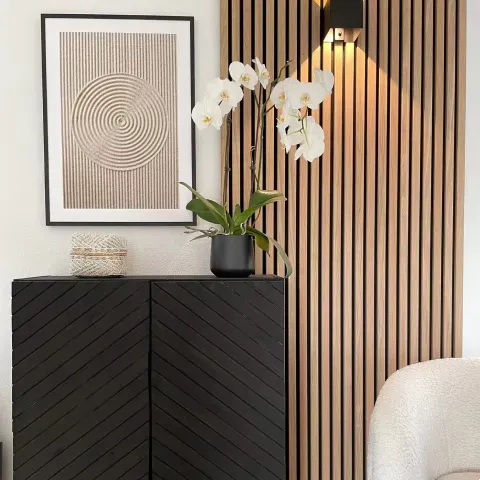Offices and Schools Continue to Drive Acoustic Wall Panel Demand in Europe
With growing attention on the quality of work and learning environments, the office and education sectors have become major drivers of demand for acoustic wall panels in Europe. Studies show that good acoustic environments reduce noise interference, improve speech intelligibility and communication efficiency, and lower stress and fatigue. These factors directly impact employee productivity and student learning outcomes, leading to increased investment in acoustic design.
In offices, especially open-plan layouts, background noise and reverberation often hinder concentration and collaboration. By installing acoustic wall panels, companies can significantly improve the overall sound environment without sacrificing flexibility in spatial planning, thereby boosting productivity. Many large European corporations now consider acoustic solutions a standard feature in office renovations and new projects.
Demand in the education sector is also expanding rapidly. Research indicates that excessive reverberation in classrooms significantly reduces students’ ability to understand speech and information. Consequently, governments and educational institutions across Europe are gradually implementing standards that require the use of acoustic materials in new and renovated schools. Acoustic wall panels, with their effective sound absorption and versatile design, have become a common choice for such projects. Looking ahead, as Europe places more emphasis on “healthy buildings,” the office and education markets will continue to drive strong demand for acoustic wall panels.
With growing attention on the quality of work and learning environments, the office and education sectors have become major drivers of demand for acoustic wall panels in Europe. Studies show that good acoustic environments reduce noise interference, improve speech intelligibility and communication efficiency, and lower stress and fatigue. These factors directly impact employee productivity and student learning outcomes, leading to increased investment in acoustic design.
In offices, especially open-plan layouts, background noise and reverberation often hinder concentration and collaboration. By installing acoustic wall panels, companies can significantly improve the overall sound environment without sacrificing flexibility in spatial planning, thereby boosting productivity. Many large European corporations now consider acoustic solutions a standard feature in office renovations and new projects.

Demand in the education sector is also expanding rapidly. Research indicates that excessive reverberation in classrooms significantly reduces students’ ability to understand speech and information. Consequently, governments and educational institutions across Europe are gradually implementing standards that require the use of acoustic materials in new and renovated schools. Acoustic wall panels, with their effective sound absorption and versatile design, have become a common choice for such projects. Looking ahead, as Europe places more emphasis on “healthy buildings,” the office and education markets will continue to drive strong demand for acoustic wall panels.
With growing attention on the quality of work and learning environments, the office and education sectors have become major drivers of demand for acoustic wall panels in Europe. Studies show that good acoustic environments reduce noise interference, improve speech intelligibility and communication efficiency, and lower stress and fatigue. These factors directly impact employee productivity and student learning outcomes, leading to increased investment in acoustic design.
In offices, especially open-plan layouts, background noise and reverberation often hinder concentration and collaboration. By installing acoustic wall panels, companies can significantly improve the overall sound environment without sacrificing flexibility in spatial planning, thereby boosting productivity. Many large European corporations now consider acoustic solutions a standard feature in office renovations and new projects.

Demand in the education sector is also expanding rapidly. Research indicates that excessive reverberation in classrooms significantly reduces students’ ability to understand speech and information. Consequently, governments and educational institutions across Europe are gradually implementing standards that require the use of acoustic materials in new and renovated schools. Acoustic wall panels, with their effective sound absorption and versatile design, have become a common choice for such projects. Looking ahead, as Europe places more emphasis on “healthy buildings,” the office and education markets will continue to drive strong demand for acoustic wall panels.
With growing attention on the quality of work and learning environments, the office and education sectors have become major drivers of demand for acoustic wall panels in Europe. Studies show that good acoustic environments reduce noise interference, improve speech intelligibility and communication efficiency, and lower stress and fatigue. These factors directly impact employee productivity and student learning outcomes, leading to increased investment in acoustic design.
In offices, especially open-plan layouts, background noise and reverberation often hinder concentration and collaboration. By installing acoustic wall panels, companies can significantly improve the overall sound environment without sacrificing flexibility in spatial planning, thereby boosting productivity. Many large European corporations now consider acoustic solutions a standard feature in office renovations and new projects.

Demand in the education sector is also expanding rapidly. Research indicates that excessive reverberation in classrooms significantly reduces students’ ability to understand speech and information. Consequently, governments and educational institutions across Europe are gradually implementing standards that require the use of acoustic materials in new and renovated schools. Acoustic wall panels, with their effective sound absorption and versatile design, have become a common choice for such projects. Looking ahead, as Europe places more emphasis on “healthy buildings,” the office and education markets will continue to drive strong demand for acoustic wall panels.
With growing attention on the quality of work and learning environments, the office and education sectors have become major drivers of demand for acoustic wall panels in Europe. Studies show that good acoustic environments reduce noise interference, improve speech intelligibility and communication efficiency, and lower stress and fatigue. These factors directly impact employee productivity and student learning outcomes, leading to increased investment in acoustic design.
In offices, especially open-plan layouts, background noise and reverberation often hinder concentration and collaboration. By installing acoustic wall panels, companies can significantly improve the overall sound environment without sacrificing flexibility in spatial planning, thereby boosting productivity. Many large European corporations now consider acoustic solutions a standard feature in office renovations and new projects.

Demand in the education sector is also expanding rapidly. Research indicates that excessive reverberation in classrooms significantly reduces students’ ability to understand speech and information. Consequently, governments and educational institutions across Europe are gradually implementing standards that require the use of acoustic materials in new and renovated schools. Acoustic wall panels, with their effective sound absorption and versatile design, have become a common choice for such projects. Looking ahead, as Europe places more emphasis on “healthy buildings,” the office and education markets will continue to drive strong demand for acoustic wall panels.
Latest News











